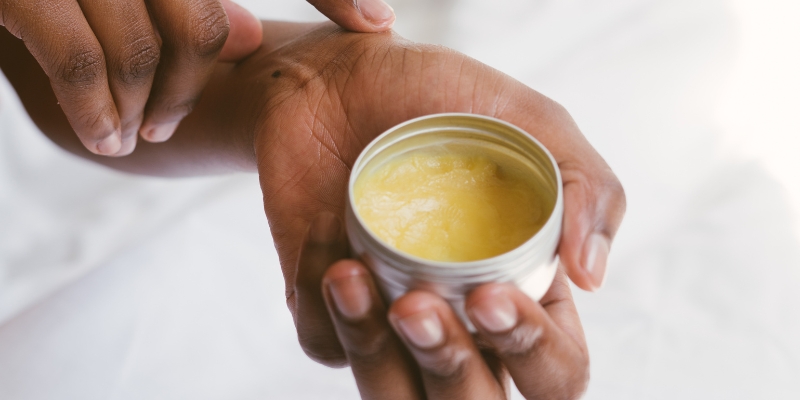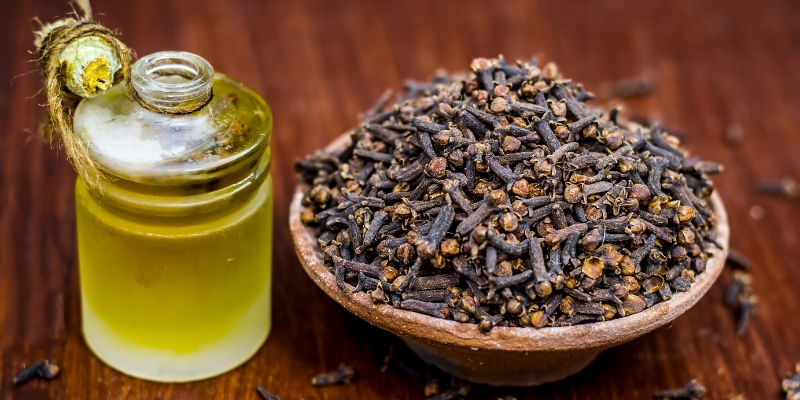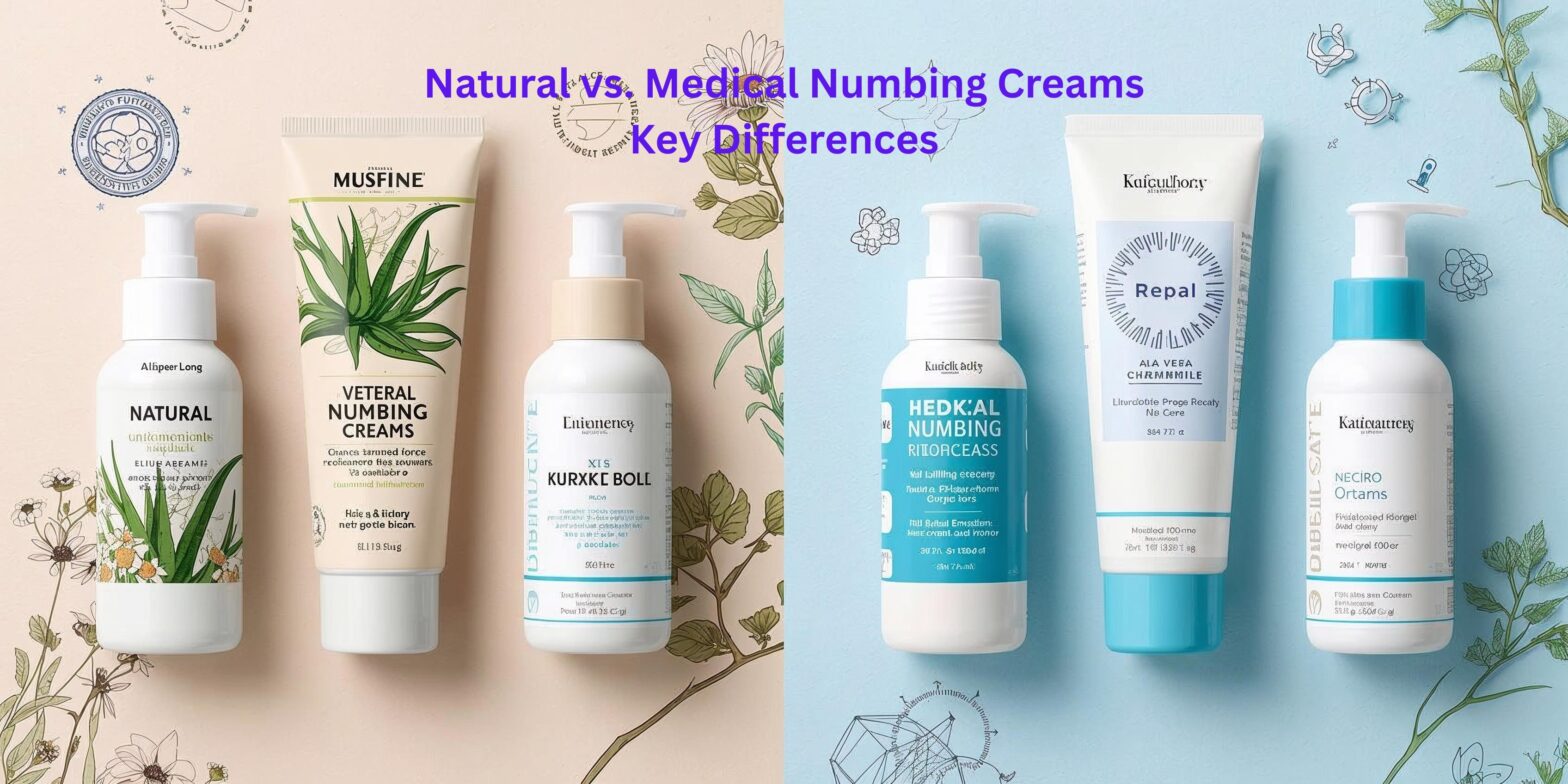Pain management has come a long way, but the debate between natural and medical numbing creams is heating up. As more people look for plant-based products, questions arise about whether herbal anesthetics can truly match the strength of pharmaceutical ones.
Natural numbing creams use plant-based ingredients like clove and peppermint oils to offer mild, surface-level pain relief. Medical numbing creams, such as those with lidocaine or benzocaine, deliver stronger, longer-lasting anesthesia for deeper procedures. The key difference lies in their potency, duration, and intended use: natural for minor pain, medical for clinical or intensive treatments.
In this guide, we’ll break down how each type works, its ingredients, effectiveness, safety, and when to choose one over the other.
Natural vs. Medical Numbing Creams: Key Differences

Medical numbing creams are FDA-approved topical anesthetics designed to block pain signals in the skin and nerves. These creams rely on synthetic chemical compounds that temporarily stop nerve transmission, providing localized pain relief for procedures like tattoos, injections, and minor surgeries.
Common Active Ingredients
- Lidocaine: The most common, available OTC or by prescription.
- Benzocaine: A fast-acting ester anesthetic, often around 20% concentration.
- Tetracaine: Long-lasting anesthetic used for deeper numbing.
- Prilocaine: Often combined with lidocaine in products like EMLA cream.
- BLT Cream: A professional-grade mix of benzocaine, lidocaine, and tetracaine.
How They Work
Medical anesthetics block sodium channels in nerve membranes, preventing pain signals from reaching the brain. Depending on the formulation:
- Onset: 15–60 minutes
- Duration: 30 minutes to 4 hours
- Penetration: Deep dermal layers, ideal for procedures that require precision
Understanding Natural Numbing Creams
Natural numbing creams use plant-based extracts and essential oils to relieve pain and reduce inflammation. While less potent, they appeal to consumers seeking non-synthetic alternatives.
Key Natural Ingredients
- Clove oil (eugenol): Strong numbing effect, often used in dentistry.
- Peppermint oil (menthol): Cooling sensation and surface-level relief.
- Chamomile extract: Calms irritation and reduces inflammation.
- Aloe vera: Soothes and moisturizes the skin.
- Witch hazel: Acts as an astringent and mild anti-inflammatory.
- Capsaicin: Creates a warming effect that masks deeper pain.
How They Work
Natural agents act differently from medical anesthetics:
- Eugenol: Desensitizes nerves through TRPV1 receptor action.
- Menthol: Activates cooling receptors to distract from pain.
- Capsaicin: Uses a counterirritant effect to dull discomfort.
Results vary, and relief tends to be surface-level and shorter-lived.
Comparative Effectiveness Analysis

Pain Relief Potency
- Medical: Lidocaine and tetracaine provide strong, reliable numbing.
- Natural: Milder relief; studies show clove oil can perform similarly to benzocaine in dental use, but effects are short-term.
Onset Time
- Medical: 15–60 minutes, depending on formulation.
- Natural: Typically 10–30 minutes, though less predictable.
Duration
- Medical: 1–4 hours depending on the ingredient.
- Natural: 15–90 minutes; requires reapplication for lasting relief.
Depth of Penetration
- Medical: Reaches deeper skin layers for procedural anesthesia.
- Natural: Works mainly on the skin surface unless enhanced by carrier oils.
Safety and Side Effects Comparison
Medical Cream Concerns
- Possible side effects: dizziness, irregular heartbeat, allergic reactions.
- Risk of systemic toxicity with high lidocaine doses or misuse.
- FDA warnings for wrapping treated skin or covering large areas.
Natural Cream Safety
- Generally lower systemic risk.
- Essential oils can cause irritation or allergic reactions.
- Eugenol may be cytotoxic in high amounts.
- Lack of concentration standardization can affect consistency.
Quality Control
- Medical: FDA-approved and batch-tested for potency.
- Natural: Variable quality and purity; not all are lab-verified.
Regulatory Status and Accessibility
Medical Numbing Creams
- Require FDA approval for active ingredients.
- Prescription-only for concentrations above 5% lidocaine.
- Produced under strict manufacturing standards.
Natural Numbing Creams
- Not FDA-regulated as drugs.
- Some ingredients have GRAS status (Generally Recognized as Safe).
- Widely available without prescription.
Cost Comparison
- Medical (Prescription): Higher cost per tube.
- OTC Medical: Moderate price range.
- Natural: Lower overall cost depending on brand or DIY recipe.
Natural products are typically more affordable, though they may require more frequent use.
Application and Usage Differences
Medical Numbing Creams
- Apply a specific dose.
- Often require occlusive dressing for best absorption.
- Should be timed carefully before a procedure.
- Gloves and professional supervision are recommended.
Natural Numbing Creams
- More flexible in use and timing.
- Essential oils must be diluted with carrier oils to avoid burns.
- Safer for at-home use but less precise in dosage.
Appropriate Use Cases
When to Choose Medical Numbing Creams
- Cosmetic and medical procedures (tattoos, microneedling, injections).
- Post-surgical or dental pain.
- Situations requiring deep, predictable anesthesia.
When Natural Creams Make Sense
- Mild discomfort (bug bites, small cuts, or toothache).
- Daily use for sensitive skin or chemical-free preference.
- Safer for short-term, light applications.
Combination Approaches
Some modern formulations blend both worlds:
- Hybrid products like Hush Gel combine lidocaine with aloe and chamomile for comfort and safety.
- Sequential strategies use natural agents before or after a medical anesthetic to soothe skin and extend comfort.
Clinical Evidence and Research
Medical Numbing Creams
- Backed by decades of research and regulatory oversight.
- Proven in surgical and dermatological pain management.
Natural Numbing Creams
- Eugenol and menthol show promise in smaller clinical studies.
- Comparable effects to benzocaine in some dental applications.
- Still need broader, standardized trials for validation.
Advantages and Disadvantages Summary
Medical Cream Pros
- Strong, reliable, and long-lasting.
- Deep penetration and proven results.
- FDA-approved safety and dosage guidelines.
Medical Cream Cons
- Higher cost.
- Risk of overdose or allergic reaction.
- Requires careful use.
Natural Cream Pros
- Safer for home use.
- Plant-based and affordable.
- Added skincare benefits like moisturizing and soothing.
Natural Cream Cons
- Milder effect.
- Shorter duration.
- Variable quality and potency.
Special Populations Considerations
- Children: Avoid benzocaine; natural oils can be used with caution.
- Pregnant/Breastfeeding Women: Consult professionals before use.
- Allergies: Always patch test; plant compounds and synthetics can both trigger reactions.
Consumer Decision-Making Guide
When choosing between natural and medical numbing creams, consider:
- Pain level: Deep pain needs medical-grade products.
- Safety: Natural is gentler for frequent or light use.
- Budget: Natural options are cost-effective for minor needs.
- Allergies: Check ingredients carefully in both types.
Ask yourself:
- How strong does the numbing need to be?
- How long do I need relief?
- Am I comfortable with synthetic ingredients?
Future Trends and Innovations
Medical Formulations
- Liposomal and nano delivery systems for stronger penetration.
- Longer-lasting lidocaine alternatives.
Natural Advancements
- Standardized herbal concentrations.
- Nanoformulations for better absorption.
Regulation and Safety
- Expect stricter quality control and labeling for both product types.
Expert Recommendations
- Dermatologists: Choose medical-grade for cosmetic and clinical work.
- Naturopaths: Use natural options for mild, everyday relief.
- Pain specialists: Recommend medical anesthetics for chronic pain.
Always consult a professional before using numbing creams for procedures or recurring pain.
Conclusion
Medical numbing creams deliver stronger, deeper, and more predictable pain relief ideal for professional and clinical use. Natural alternatives, on the other hand, offer a safer, gentler way to manage minor discomfort. The best choice depends on your pain level, safety concerns, and personal preferences. Neither is universally superior; it’s all about using the right tool for the job.
FAQs
Yes, but only under professional guidance. Combining them can enhance comfort, but improper mixing may irritate the skin.
No. Clove oil should not be applied to broken skin, as it can cause burning or irritation.
Medical-grade lidocaine creams are commonly used, but always confirm with your artist to ensure compatibility.
Clove oil and eugenol gels can provide temporary relief but are not substitutes for dental treatment.


